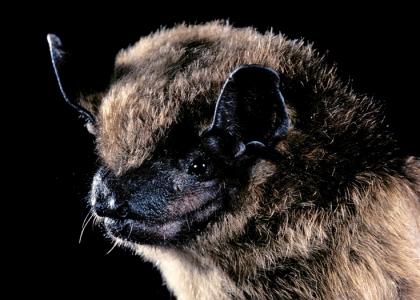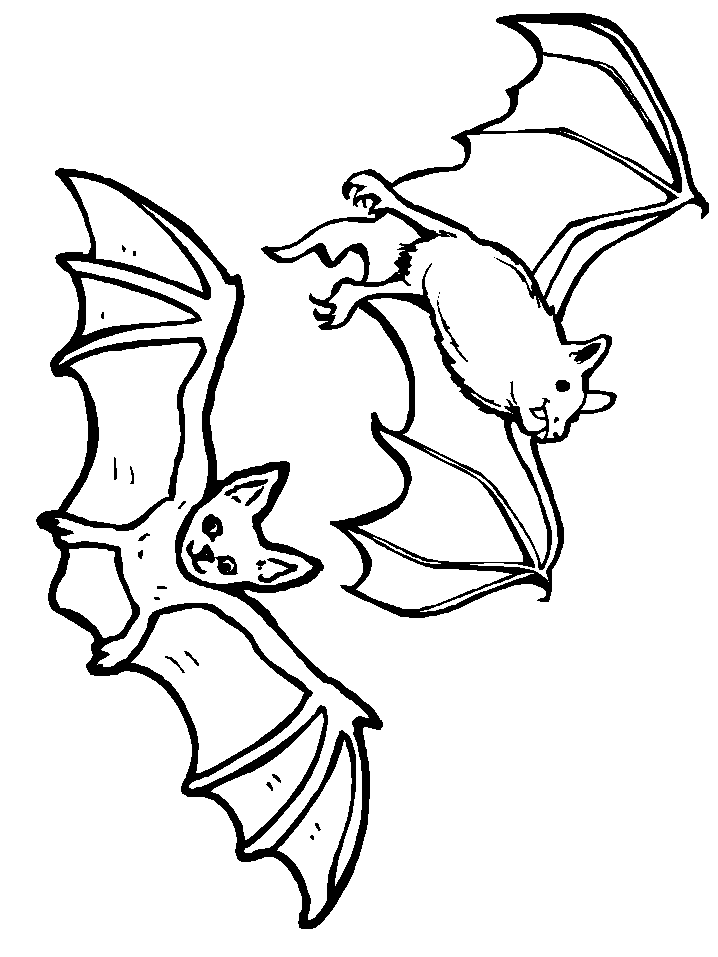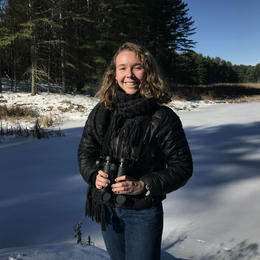Today we will learn what bats live in Vermont, where they seek shelter and food, why they are important to the food system, their conservation status and how they communicate through echolocation! First we will cover some batty information and facts, then we will jump into a couple of activities where your student will learn about bat's hearing and communication.
Start your student off with these prompts to see what they already know about bats:
What do you know about bats? When are bats active - day or night? Have you seen a bat before? What did it look like?
Do bats make noise? What kind of animal is a bat?
A little about bats
Bats are flying, nocturnal mammals - so they are most active at nighttime. Contrary to the popular saying, "as blind as a bat," bats actually have very good vision that allows them to see in the dark. Bats are also the only mammals capable of prolonged flight! Other mammals, like the flying squirrel, have wing-like flaps of skin along their arms that allow them longer air time when they jump, but they cannot fly.
Where do they live? Bats tend to like cool, dark places for nesting and roosting. Caves, tree cavities and human-made structures like attics, barns and sheds.
What do they eat? A bat's diet depends on the species and location. All of the bats in Vermont are insectivores, meaning they ONLY eat insects. Other bats in more tropical regions love to eat fruit and nectar from flowers, these bats are called frugivores. Both diets provide valuable ecosystem services to the environment. Insectivore bats help keep pest populations down, which lowers the risk of crop loss for farmers and tree loss in forests. On the other hand, frugivore bats act as pollinators just like bees and butterflies. Pollinators are animals that aid plant reproduction by carrying pollen from male plants to female plants. Without bats, we wouldn't have some of our favorite fruits like bananas and mangoes!
Bats in Vermont
We have nine species of bats in Vermont. Just like many other mammals, bats either hibernate for the winter in Vermont or migrate (move) south into warmer temperatures. Unfortunately, five of the nine bats are listed as threatened or endangered species, which means that they are at risk of going extinct. All bats found in vermont are insectivores, meaning they love eating bugs. (Click on any bat name to be directed to a species profile with more information!)
These bats are endangered at the state level:
- Little brown bat - These little bats like to take up residence in your attic to hibernate in the winter! They can eat up to 1,200 mosquito-sized bugs in an hour! Favorite snack: aquatic bugs
-
Eastern small footed bat - These bats love living in Hemlock forests and are the smallest bat in the Eastern U.S. Favorite snack: mosquitos
-
Northern long-eared bat - Heavily impacted by White Nose Syndrome, a fungus that infects the skin of bats and kills them. Favorite snack: moths
These bats are endangered at the state AND federal (national) level:
- Indiana bat - These bats hibernate in caves sometimes filled with over 15,000 bats! Favorite snack: crane fly
- Tri-colored bat - “Tricolored” refers to the bat’s yellowish brown coat that is dark at the base, yellowish-brown in the middle, and dark at the tips (US FWS, 2019). Favorite snack: Grain moths
These bats migrate south for the winter and roost (rest) in trees.
- Eastern red bat - Their reddish color actually helps them blend in and look like a pinecone or dead leaf. Favorite snack: moths
- Silver haired bat - Very common forest bat. Favorite snack: leafhoppers
- Hoary bat - Dubbed America's 'Most Handsome' bat. Favorite snack: crickets
And then there is the Big Brown Bat. Big Brown Bats live in almost every single kind of habitat we can think of - from dense forest to deserts. Unlike some of the other species listed above, these bats are doing just fine! In fact, they are very abundant and a common unwelcomed attic or barn guest. Like most bats we find in the Northeastern U.S., Big Brown Bats play a crucial role in pest management for farmers and forests because they love to eat insects, like ground beetles and cucumber beetles, that damage plants we like to eat or are important to the forest ecosystem.

How do bats communicate?
Do bats have a language like we do? Do they sing songs like birds? Do they croak like frogs to send a message? No! Bats have a special way of communicating using sound waves, called echolocation. Bats hunt and communicate with each other by emitting high-pitched (ultrasonic) calls and listen to the echoes that bounce off objects, including prey, to locate food and avoid obstacles.
How Echolocation Works
Ok now we are going to play some games to understand a bit more about a bat's hearing and communication.
Listening like a bat
Materials:
- Dried beans
- A cup of water
- A good sense of imagination!
Reiterate the importance of hearing to bats to your student. Have your student cup their hands behind their ears to create “bat ears” and close their eyes to heighten their sense of hearing. Ask kids to count the number of beans dropped into the water.
Did you count them all? Was it hard to hear the beans? What kind of sound did they make when they hit the water?
Bat and Moth (Echolocation game)
Materials:
- Something to use as a blind fold (bandana, t-shirt, etc.)
This game is kind of a batty version of marco polo. One student will get blindfolded - they are the bat. You or another student will become the moth, aka the bat's prey. If you have any other students they can stand still as trees in the forest. The bat must find the moth using echolocation. When the bat makes a “peep” noise the moth must echo back the “peep.” If bat comes too close to a tree the tree must make a sound (“tree”). Every time the bat call out “peep” it’s their sonar signal hitting the moth. They send it out to see if there’s anything out there. Their cry bounces off the moth and returns to them like a sonar signal. The return signal is the sound “MOTH” that you shout. Now she knows moths are near and she can find you.
Were you able to catch the moth? Was it difficult to rely only on your hearing? If you had to rely on one sense, which one would you pick and why?
Bat coloring page:

Conservation Action!
As you saw from the mini profiles of bats living in Vermont, many species are at risk of going extinct and are witnessing extreme dips in population. This is due mostly to White-Nose Syndrome and human development causing habitat loss or death. White-nose Syndrome is a fungus that looks like white fuzz on bats' noses that attacks hibernating bats' skin while they are in an inactive state, as it grows it causes the bats to become more active during winter thus burning their fat supply that they need to survive quickly. The disease has resulted in the loss of more than 5.7 million bats in the northeastern United States since 2006. This disease has affected all six of Vermont’s cave bat species (bats that hibernate in caves and mines in the winter months). WNS is associated with a newly identified fungus that invades the skin and damages the tissue in hibernating bats (Vermont Fish & Wildlife Department).
How can you help?
Install a bat house in your yard or ask your local Park & Rec department about putting some up in parks and nature centers. Attached below is a guide on how best to install and attract bats to your bat houses.





